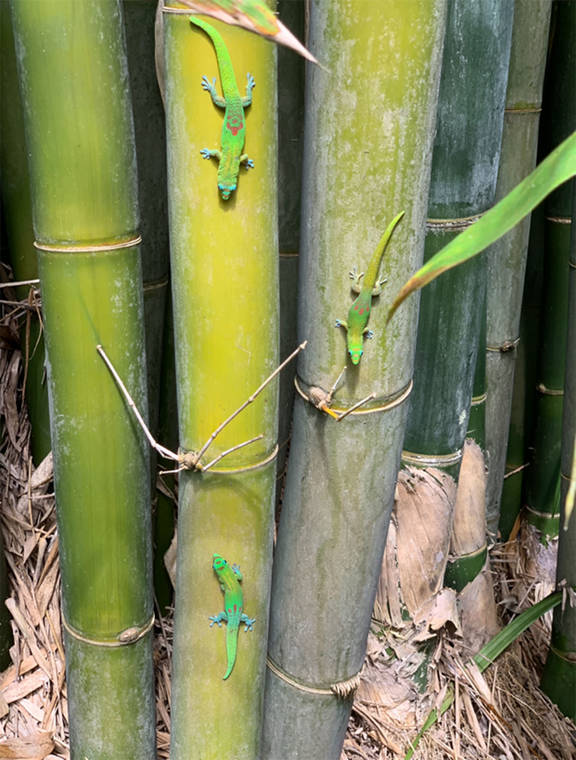Have you noticed that a walk in the forest or time spent in the garden brings a sense of peace? It is a way to get back to our natural roots. Seriously, hugging a tree can help you feel a sense of connection with the Earth.
Most folks say they hope for peace on Earth, especially during this season when that message is loud and clear. Many also wish for a happy New Year.
The question is what is happy and what is peace — 2020 was a difficult year, with many folks suffering from COVID-19 and economic difficulties.
To some, having more material wealth is what apparently makes them happy. A recently released book by Mary Trump, “To Much And Never Enough,” does a good job describing this condition. To others, real wealth is being spiritually in harmony with humanity, a Higher Power and the natural environment.
Spending time traveling and hanging out with regular folks leads to the realization that being at peace and happy has little to do with material wealth. You can meet many folks who would be considered poor, but don’t see themselves that way. It is more about having a strong spiritual foundation, family and community connections.
The rich Hindu prince Siddhartha gave up his wealth and meditated for years until he reached “Enlightenment” under the shade of a Bo tree, or Ficus religiosa. This is reminiscent of the teachings of Jesus quoted in the Gospels of Mark and Luke, going something like this: I tell you the truth. It is hard for a rich man to enter the kingdom of heaven. Again I tell you, it is easier for a camel to go through the eye of a needle than for a rich man to enter the Kingdom of God.
Wow, that is heavy!
In more modern times, some have promoted the concept that the richer one becomes is proof of God’s blessings. Unfortunately, it seems that the more we have, the more we desire more.
After being in several so-called third world countries last year, we were reminded that being poor is a classification based a country whose citizens have a low annual income or gross domestic product. We visited Myanmar, which is considered one of the poorest countries in Asia. The average income per capita is about $1,300 per year.
But as long as they have food, a home and health, they profess to be living happy and peaceful lives. This does not necessarily hold true in big cities such as Mandalay and Yangon, where modern influences have created a hectic consumer culture.
Perhaps the key to peace and happiness is that it should be coupled with faith, hope and the greatest power of all, aloha.
The question is, can aloha help us to have ethnicity without ethnocentricity? Can we appreciate that we are unique without putting down someone else?
It is so easy to fall into the “us and them” mode of thinking that it takes constant mental push-ups to see all humans as connected. We might even expand that connection to all living things.
One way to practice is by noting our attitudes about other inhabitants of our global ecosystem.
For example, let’s take a look at our beautiful Hawaii gardens. They are composed of plants from all around the world.
Some arrived long ago, transported by ocean currents, winds and birds. Hundreds of varieties were brought here by the first human inhabitants. These include kukui, coconut, ti, breadfruit, banana, sweet potato and many others. Later, each group brought the plants associated with their culture.
When it comes to our gardens we can see things differently. Our gardens give us the opportunity to do our mental push-ups and acknowledge the value of each of the diverse life-forms including the plants, insects, lizards, frogs and birds.
Most non-native plants introduced purposely have benefited man. With diversified agriculture essential for our economic survival, it is important we don’t hamstring ourselves so we are unable to grow a crop that is of benefit to our community and economy by maligning all non-native species.
The message for our future is that it is time for all members of our island community, including environmental groups, agricultural interests, the visitor industry, politicians and others to work together on plans that focus on good management of our resources.
Our New Year’s resolution can be to see the spark of good in all things and in all people, even though we don’t necessarily like some of them. It might be simply sharing a smile or planting a tree. Maybe going further and trying not to eat animals is another step to attempt.
Even though 2020 was the worst year in recent history, let’s make 2021 the best by living aloha.



